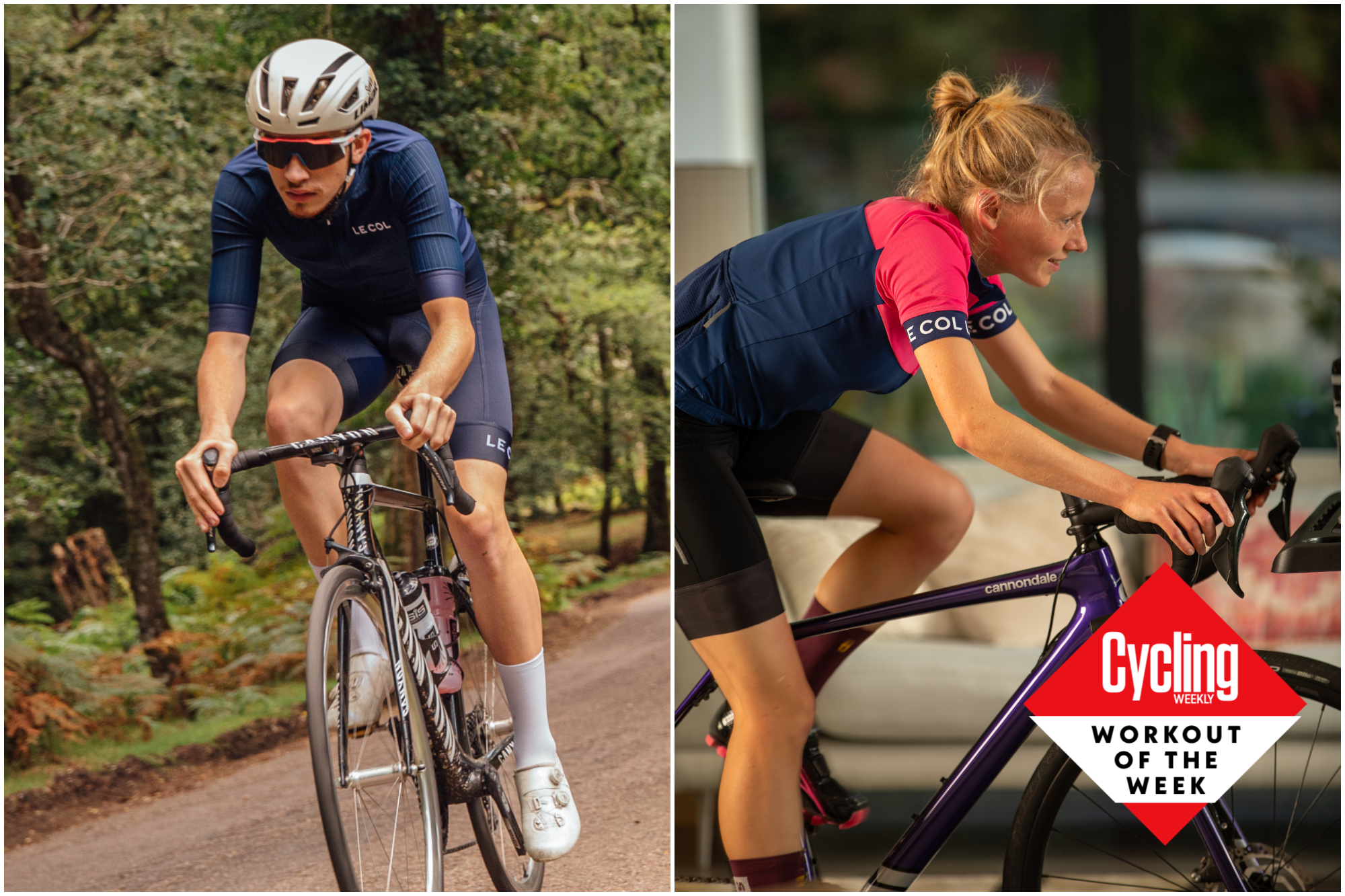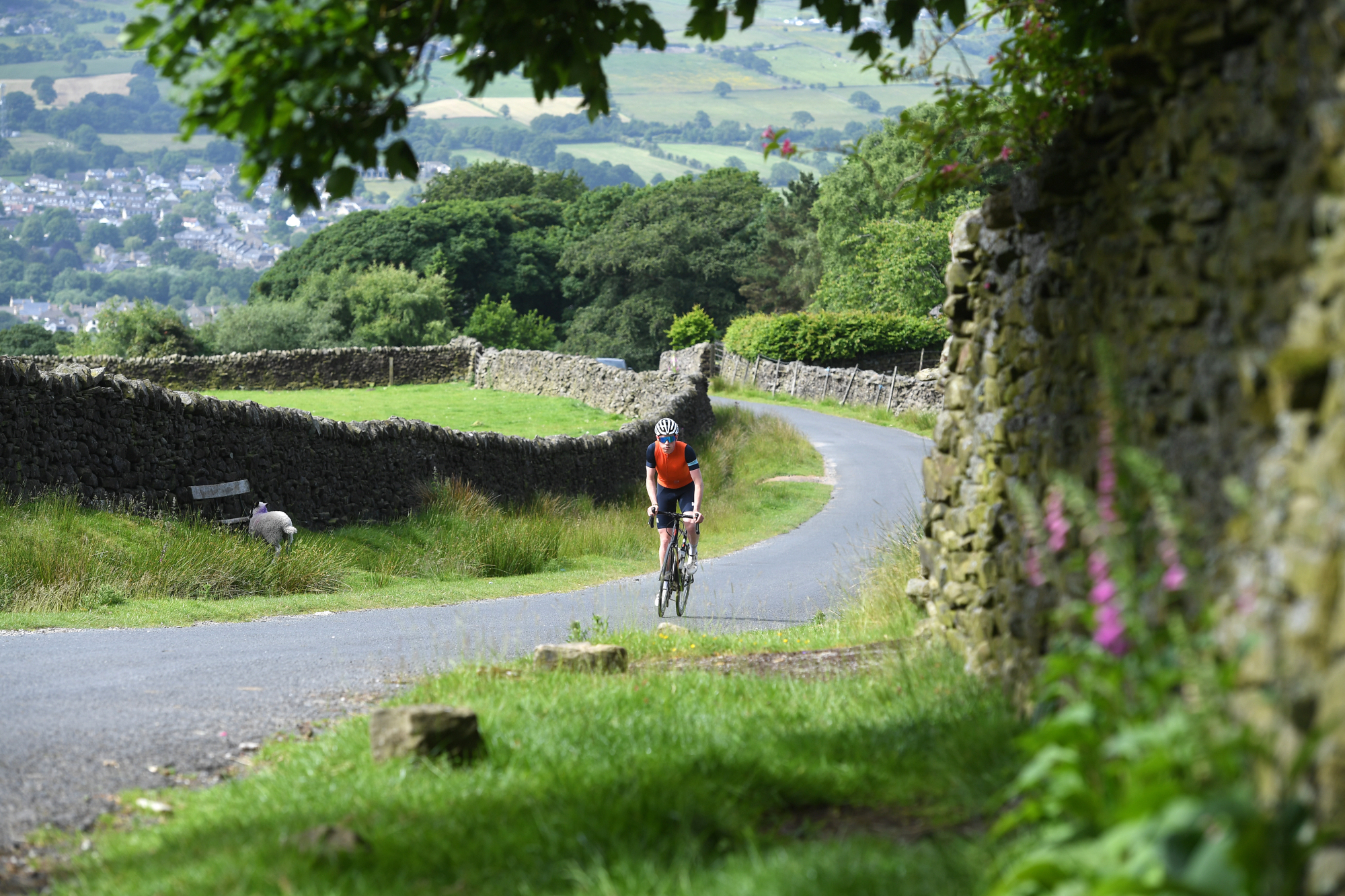Cycling workout of the week #3: MAP (Maximal Aerobic Power) efforts - Boost your speed on steep climbs [1hr 5 mins]
Do if…you want to build your maximal aerobic engine to stay with your mates on four to six minute climbs


We’ll be bringing you a fresh new workout every monday in our new CYCLING WORKOUT OF THE WEEK series - we’ll explain the benefits of sessions and provide an outdoor alternative targeting the same systems.
Do you find yourself getting dropped as soon as your mates decide to blast it up a short climb? You’d have them on a mountain or longer hill - but sadly, that’s terrain you’re blessed with…
If this hits close to home - or if these efforts are already your happy hunting ground and you wish to further improve - then this week’s session is ripe for you.
The purpose of this cycling workout is to stress our maximal aerobic system and improve not only our aerobic capacity but also our ability to produce large amounts of power for intervals of between four to six minutes.
These are especially useful for those looking to be stronger on climbs of this duration, which are very common in the UK. Plus, if you’re interested in racing, this cycling workout also helps with improving pursuit efforts.
The workout
To download the session click on the embedded graph above. If you’re not already set up on TrainerDay it’ll ask you to register for an account - it’s free to do so and it’s free to download the session.
After you’ve warmed up, there’s four sets of four minute efforts at 110-120 per cent of your FTP (or Critical Power) with six minutes rest.
Get The Leadout Newsletter
The latest race content, interviews, features, reviews and expert buying guides, direct to your inbox!
Critical Power is an alternative to FTP for setting training zones, find out how to get your numbers and use them in our explainer on Critical Power here.
These four minute efforts are not far off your five minute maximum power which is often referred to as Maximal Aerobic Power (MAP) - so they are going to feel tough. Just make sure you have enough left in the tank so that you can still hit the same numbers on the last interval as the first.
Simply explained
The way this cycling workout works can be treated as quite straightforward: you want to improve your four to six minute efforts - so pop some four minute efforts into your training.
It’s important to note that these efforts are on the shorter end and also aren’t quite at the very limit of your physical capacity. Going too hard and long at the start of the session would impact the later intervals - what you really don’t want to do is exhaust yourself so you end up putting out too little power by the end.
The goal is to stress the aerobic system - and that does require some level of pacing.
Let’s geek out…
The range of power for these efforts varies significantly, depending on your power profile as a rider. Often, a rider’s maximal aerobic power will fall between 110-120 per cent of FTP (or Critical Power) but, in some circumstances, it can be higher or lower. It is referred to as MAP, as efforts shorter than this are more glycolytic and have a higher percentage of anaerobic contribution, hence why MAP is defined as being the maximal power efforts we can sustain predominantly aerobically.
What we (as coaches or athletes) are looking for in these efforts is two-fold. The first objective is maintaining a higher power for the duration. This is useful for Individual Pursuits (IP), where a high but steady maximal power is required for 4 to 4.5 minutes. For targeting IPs, doing these efforts in the aerodynamic position will help to maximise power in that position.
Sustaining power in this way is also extremely useful for improving your time up a local climb during a road ride, and competing in road races or hill climbs, where four to six minute climbs are a common occurrence. In road races, these climbs often present a great opportunity to break away, drop the opposition, or are the location of the finishing line. So, being powerful over this duration is very important.
The second metric we want to monitor is the Heart Rate (HR) response to the efforts. These are sometimes referred to as VO2 max efforts as, during VO2 max Ramp tests, MAP is often the power at which VO2 max is achieved. However, VO2 max is not a power output, and can be achieved by different methods.
VO2 max is defined as: the maximal rate of oxygen consumption where HR is maximal (or near maximal) and rate of perceived exertion is 10/10 (or 20/20 on the Borg Scale). One way of determining if VO2 max has been achieved is by looking for a HR plateau. Essentially, the HR hits a maximum, but does not increase any further as maximal oxygen uptake has been achieved. Improving VO2 max is the key to improving aerobic performance.
Golden rule
Don’t worry about maintaining the power for the efforts in this cycling workout; the main focus is getting the HR up so starting closer to 120 per cent of Critical Power, and even dropping to 105 per cent, is not an issue. If IP is a goal then maybe try to average as high a power as possible with an initial surge followed by settling into the effort whilst aiming to achieve limited drop in power by the end of the interval.
Sunny out? How about…

These efforts are fairly straightforward to conduct on the road. For IP, it is best to do these efforts on a time trial bike so you can work on producing power in the aerodynamic position. In this case, find a nice flat or rolling stretch of road that lasts for more than the length of the effort.
It requires a bit of route planning, or repeats on the same stretch of road, but it is manageable. Don’t worry too much about the time between efforts, just make sure you are recovered for each one and able to push your hardest.
Another simple way of performing these outside is by locating a four to six minute climb. Once you have completed your four min effort, you can recover by either turning around, riding on the flat or continuing to the next climb before repeating your effort. If you need to continue to the top of a longer climb, have a longer rest between efforts as you will likely be riding at a higher intensity than recovery up the rest of the climb.
Stay tuned for next week’s session, we'll be bringing you a fresh new cycling workout every Monday.
In the meantime you can find more indoor cycling sessions for turbo training here, sessions specifically if you only have 30 minutes spare to work out here, and training plans for beginners, intermediates and racers here.
Or how about having a go at one of the previous cycling workouts of the week:
- Cycling workout of the week #1: 20/40s [50 mins]
- Cycling workout of the week #2: Glycolytic Capacity efforts [1hr 3 mins]

Thank you for reading 20 articles this month* Join now for unlimited access
Enjoy your first month for just £1 / $1 / €1
*Read 5 free articles per month without a subscription

Join now for unlimited access
Try first month for just £1 / $1 / €1
Andy is a Sport & Exercise Scientist, fully qualified and experienced Cycling Coach, Sports Director, Freelance Writer, and Performance Consultant. He spent 3 years riding for a UCI cycling team and 7 years as a BC Elite rider, competing in prestigious events such as the Tour of Britain and the Volta a Portugal.
Graduating with a first-class honours degree in Sport & Exercise Sciences, he continues to pursue his interest in research in the field of Sport Science alongside managing his coaching business, ATP Performance. He also works as a Wind Tunnel operator and Performance Consultant at the Silverstone Sports Engineering Hub, working with individuals, teams, and businesses to optimise performance and develop products.
-
 Aero bikes with gravel wheels?: Six tech insights from Paris-Roubaix Femmes
Aero bikes with gravel wheels?: Six tech insights from Paris-Roubaix FemmesEverything we found out about tyre widths, self-inflating systems, and wheel choices from the cobbled Monument
By Tom Davidson Published
-
 'This race is absolutely disgusting': Peloton reacts to another brutal Paris-Roubaix Femmes
'This race is absolutely disgusting': Peloton reacts to another brutal Paris-Roubaix FemmesNow in its fifth edition, Paris-Roubaix Femmes is still a tough race, even for the best bike riders in the world
By Adam Becket Published